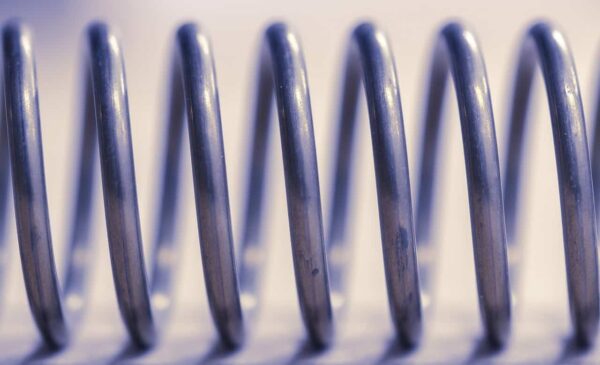There is an option to turn on weak springs within ANSYS Workbench as shown in the image below :

The main reason for turning these on is to aid in convergence. If activated, the solver creates a number of artificial linear springs attached to the geometry (weak springs are not to be confused with soft springs Read more about soft springs here). These springs are meant to stabilize the model and can be useful if the model geometry experiences excessive, and sudden displacements.
If one chooses to use weak springs then they should check the load reaction on the springs and verify that it is negligible compared to the loads applied to the model.
Personally, I almost always keep the weak springs turned off unless I have a specific reason to activate them (more on this later). Here are my reasons for keeping weak springs off:
- A well defined model should have no need for weak springs – The springs are artificially introduced and if they are required to achieve convergence , then this may point towards an issue elsewhere in the model – boundary conditions / contacts etc.
- They may do enough to prevent error messages from appearing, but not enough to achieve convergence. I have seen this a number of times. I have had models with hundreds of non-linear contact definitions just sit for hours trying to converge at the first iteration, yet there is no error or warning message that would give me a clue as to what is the underlying issue. As soon as I turned off weak springs, I would get an error message such as :
There are 5 small equation solver pivot terms (e.g., at the UX degree of freedom of node 2116). Please check for an insufficiently constrained model.
The above message clearly indicates that the model is under-constrained and needs appropriate boundary conditions and / or contact definitions. Typically, I would create a named selection for the offending node (856 in this case) and identify its location in the mesh. This would usually be sufficient to understand the issue – usually it is a contact that I hadn’t defined.
With the weak springs turned on, the springs would try to “compensate” for the lack of contact, but were not succeeding and the model kept on running needlessly.
When to turn on Weak Springs?
Weak springs do have their uses though:
- As mentioned above, the primary reason for turning on weak springs is to aid in convergence. One can use weak springs to assist a solution to converge to a result. Again, if used it is best to check the load reaction on the springs and confirm that it is significantly less than the applied loads.
- For example, suppose I have developed a model that I know runs fine – I am satisfied with the behavior of the model. If I were to re-run this model (say after making a small change; Maybe I increased the applied load or changed the material assigned to a component) I could activate weak springs. This might save me solution time if the weak springs allow the model to progress through the load iterations more quickly, due to the added stability provided by the springs.
